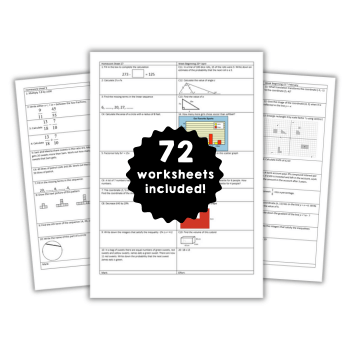Maths conversions – Do students really understand the question?

When your pupils tackle questions that involve conversions, do they know what’s actually being asked of them? Richard Coles isn’t so sure…

The purpose of this article is to consider the way we, as maths teachers, deliver content to our students and why we do what we do.
Questions will be posed throughout, alongside examples to highlight my thinking when planning and delivering the topic of conversions, though the points could easily be applied to other topics that suffer from similar misconceptions.
In recent years there has been a decline in pupils’ conceptual understanding of conversions. Across all exam boards in 2019, it emerged that pupils at both Foundation and Higher level answered questions about conversions poorly.
Defined as ‘A change in the form of a measurement, different units, without a change in the size or amount,’ the etymology of the word derives from the Latin conversionem (‘A turning round, revolving; alteration, change’); a noun of action from the past-participle stem convertere (‘To turn around; to transform,’); from the assimilated com (‘with, together’); and vertere (‘to turn’).
Why might students find conversions difficult? We live at a time where we’re plagued by a combination of imperial and metric units. We measure our speed when driving in miles per hour, but compete in 5km park runs on Saturday mornings.
We measure our height in feet and inches, but weigh ourselves in kilograms. Children barely know if they’re coming or going with regards to knowing what any given unit is, let alone how to convert it.
Complex vocabulary
It’s sometimes easy to assume that students don’t answer questions correctly because they don’t understand the methods required, or the content, yet the language of the question also requires decoding. Do we spend enough time breaking down question phrasing and vocabulary?
The work of Beck and McKeown refers to different tiers of vocabulary that increase in complexity, but are all essential for students if they are to understand exam questions.
In essence, tier 1 vocabulary is everyday language that will be familiar to all students (eg ‘unit’).
Tier 2 words are more complex, perhaps not part of everyday speech, but likely to be found in academic text across different subjects (eg ‘equivalent’).
Tier 3 vocabulary is subject-specific and specialist (eg ‘algebra’).
We can generally ignore tier 1 words and assume understanding, and will naturally tend to focus on our own subject’s tier 3 key terms. However, we also need to spend time developing confidence with tier 2 words, as these are powerful for helping to decode exam questions.
Concepts and formulas
Let’s look at three examples from AO1-3 and consider how to deliver them, beginning with this AQA AO1 question:
What metric unit should be used when giving the distance from London to Liverpool?
What Tier 3 words are needed to understand this question? Do the students know what is meant by a kilometre, mile and metre?
We should then consider the students’ understanding of those Tier 2 words. I’ve seen many experienced teachers, including myself, assume that students know these already – but do they?
Take ‘distance’, for example. Do we explicitly tell pupils the meaning, or simply assume they know it?
What metric do pupils use for distance themselves in their daily lives? Did they make the link between ‘metric’ and ‘metre’ in the question? Do they even have any knowledge of where London and Liverpool are in relation to each other?
In many trials of this question pupils selected ‘miles’, due to them having often been in cars and knowing that signposts display distances in miles. Let’s examine a second example.
A car travels 192.5 km in 3 hours and 45 minutes. What is the average speed of the car?
Key items to consider here include the way formulas can differ between maths and science departments. How confident are you that the formulas you use are the same as those taught by your science colleagues?
It may be worth investigating this, both to maintain consistency and avoid student confusion between subjects.
I have personally found that students with lower attainment are more successful when using formula triangles.
A personal favourite of mine is teaching the acronym ‘Don’t Squash Turtles’ to help remember ‘speed = distance over time’ – cheap chuckles from the pupils, but they remember it and get the order correct. I first saw a colleague using this in 2010 and haven’t looked back since.
Returning to our question, can your pupils convert minutes to decimal form? Have they practised this as an explicit skill prior to being given the AO2 style question
Also, consider again what tier 2 words might need addressing. Do your students understand the concept of ‘average speed’? Have you sequenced the learning within your curriculum to ensure that averages were delivered in advance of teaching speed / distance / time? Make the link between the two explicit.
Underselling our pupils
Let’s look a final example, AO3, taken from the 2019 international exam specification:
You often hear the word ‘acre’ when farmers are talking about the size of their farms. Farmer Giles likes to think of himself as a modern farmer. He says that his farm occupies an area of 1,011,750m² – that’s one million, eleven thousand, seven hundred and fifty square meters.
But Farmer Morris is still a bit old-fashioned. He says that his farm, which occupies 250 acres, is larger than Farmer Giles’s farm. If one acre is equivalent to an area of 4,047m², whose farm is larger?
How many of your pupils would simply skip this question altogether due to its wording? Can they extract the key information?
A task that I’ve found effective is for pupils to redact the text and then see what information helps. As with AO1 and AO2, it’s essential that pupils understand in advance not only the technical vocabulary of tier 3, but also the tier 2 words within the questions.
This specific wording may be unlikely to appear as GCSE question, but we undersell our pupils if we don’t cover questions of this type because they don’t employ the exact same wording as the specification.
Pupils are still being called on to demonstrate the same mathematical skills required for conversion, but with deeper contextual understanding.
In my opinion, the development of these overall skills is more important, and certainly more beneficial for later life, than simply satisfying the exam requirements.
8 steps to improved attainment
- Consider the phrasing and vocabulary used within questions
Richard Coles is an assistant director of sixth form and careers lead at Brockhill Park Performing Arts College school in Kent, and an experienced head of maths and teacher; he tweets from @richardcoles10.











